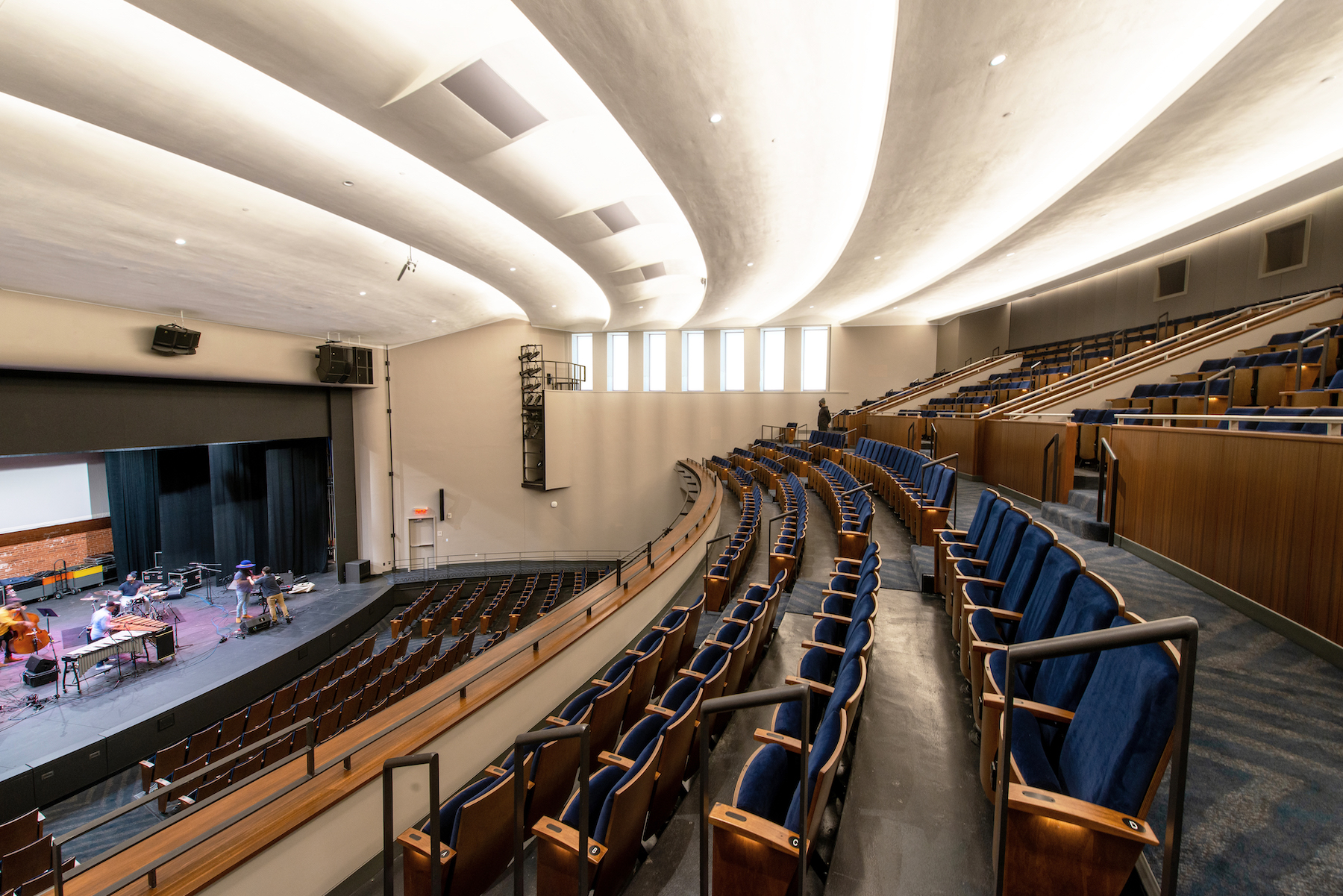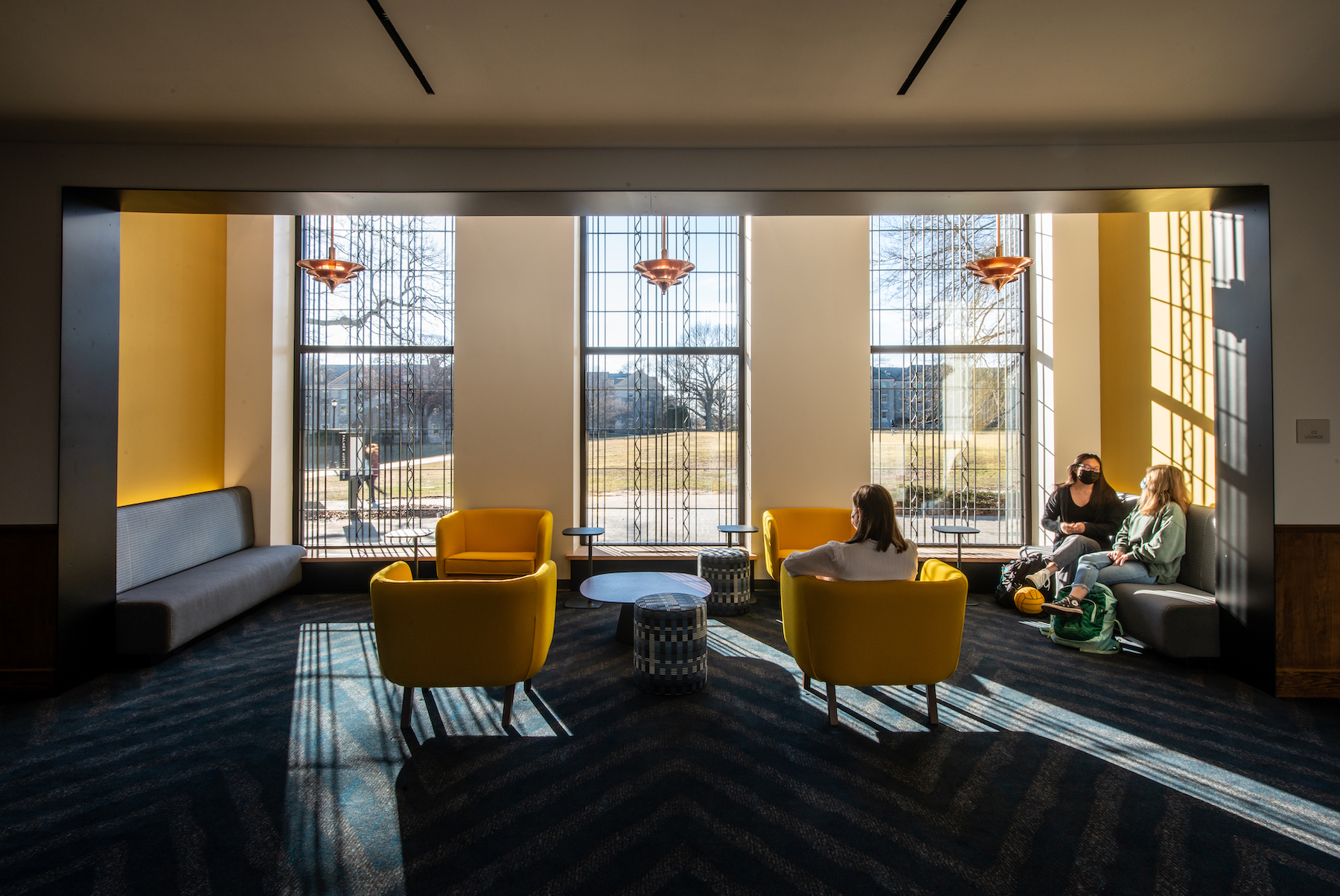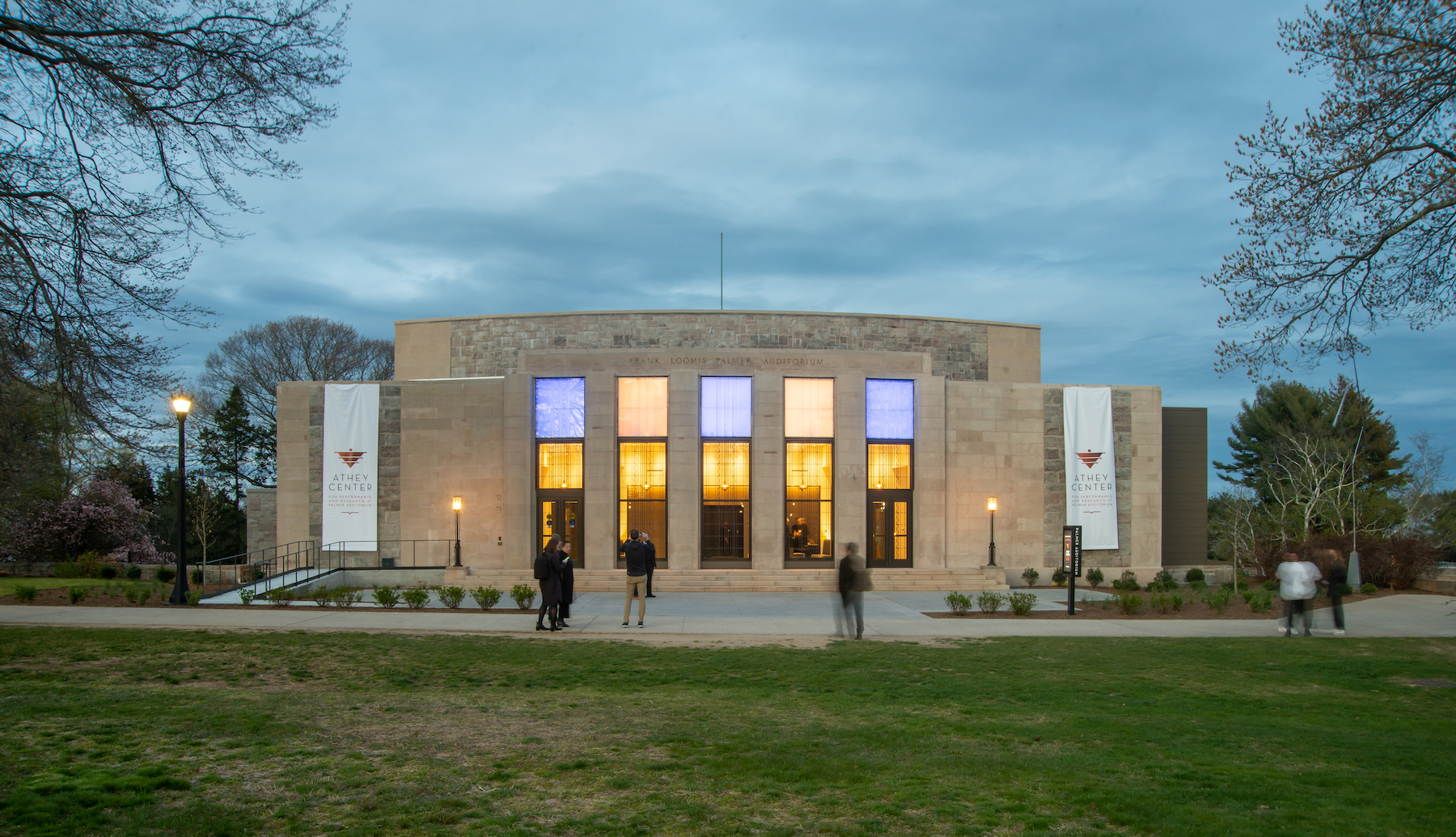Palmer Auditorium, on the campus of Connecticut College in New London, is an Art Deco theater designed by William F. Lamb in 1939, who also designed the Empire State Building in New York City. The theater has a long history of hosting acclaimed artists, musicians, and performers, from Dizzy Gillespie to Yo-Yo Ma.
This spring, the 38,500-sf building entered a new era, thanks to its new name—the Athey Center for Performance and Research at Palmer Auditorium—and a $23 million renovation by a team that included the architecture firm Ennead Architects, which modernized the facility to support teaching, learning and performance across a spectrum of disciplines.
The project dates back to 2018 and took 24 months of construction. It was completed in April, and included a new entrance, façade renewal, and interior renovation to the auditorium, lobbies, lounges, costume and workshop, as well as the teaching, administrative, and support spaces.
“A lot of things needed improvement,” says Brian Masuda, Associate Principal with Ennead Architects, whom BD+C interviewed with Molly McGowan, a Partner at the firm. Prior to the renovation, clerestories in the auditorium had been boarded up, and the building, says Masuda, “was very dark, and kind of shut off from the rest of the campus.” So it was imperative to bring more natural light into the building, including onto its historic wood stairs that were preserved and restored.

The renovation opened up three sides of the building with glass door fronts and feature walls. On the building’s historic side, the team replaced deteriorating spandrels with lightboxes made with cast glass. And where appropriate, transparent materials were used. Inside, the lobby window looks down onto the studio. And the theater department, which had been scattered throughout the building, was consolidated within one wing.
McGowan says the renovation “recognizes the history of the building” while, at the same time, making what is now part of the college’s Theater Department more modern. The challenge, says Masuda, was blending the old and the new, from rehanging the lobby’s lighting pendants to adding modern furniture and new carpeting with an Art Deco-like chevron pattern.
SUBTLE RENOVATION ADDITIONS

About 500 usable square footage were added to the building during the renovation. By making small adjustments to the building plans within the existing footprint, Ennead created a new lounge area and box office with an expanded public lobby. The lobby spaces on two levels were re-imagined to serve as informal teaching and study spaces. Two key elements were introduced at the main level lobby: a highly visible entry to the Theater Department’s administrative suite and a visual connection to the newly created teaching studio.
The auditorium seating now provides access that complies with the Americans with Disabilities Act, as well as improved sight lines, better acoustics, a new state, and visual technology upgrades.
“The renovations have resulted in a magnificent transformation that promises to make the Athey Center a destination for the region and an inspiration for future generations of student performers ready to make a difference with their art,” said Connecticut College’s president Katherine Bergeron.
The Building Team on this project included A/Z Corp (GC), Altieri (ME), Silman (SE), and Next Stage (theatrical consultant).
Related Stories
| Jul 18, 2014
Top Engineering Firms [2014 Giants 300 Report]
Fluor, Arup, Day & Zimmermann top Building Design+Construction's 2014 ranking of the largest engineering firms in the United States.
| Jul 18, 2014
Top Architecture Firms [2014 Giants 300 Report]
Gensler, Perkins+Will, NBBJ top Building Design+Construction's 2014 ranking of the largest architecture firms in the United States.
| Jul 18, 2014
2014 Giants 300 Report
Building Design+Construction magazine's annual ranking the nation's largest architecture, engineering, and construction firms in the U.S.
| Jul 7, 2014
7 emerging design trends in brick buildings
From wild architectural shapes to unique color blends and pattern arrangements, these projects demonstrate the design possibilities of brick.
| Jul 7, 2014
A climate-controlled city is Dubai's newest colossal project
To add to Dubai's already impressive portfolio of world's tallest tower and world's largest natural flower garden, Dubai Holding has plans to build the world's largest climate-controlled city.
| Jul 2, 2014
Emerging trends in commercial flooring
Rectangular tiles, digital graphic applications, the resurgence of terrazzo, and product transparency headline today’s commercial flooring trends.
| Jun 30, 2014
Philip Johnson’s iconic World's Fair 'Tent of Tomorrow' to receive much needed restoration funding
A neglected Queens landmark that once reflected the "excitement and hopefulness" at the beginning of the Space Age may soon be restored.
| Jun 30, 2014
Research finds continued growth of design-build throughout United States
New research findings indicate that for the first time more than half of projects above $10 million are being completed through design-build project delivery.
| Jun 18, 2014
Arup uses 3D printing to fabricate one-of-a-kind structural steel components
The firm's research shows that 3D printing has the potential to reduce costs, cut waste, and slash the carbon footprint of the construction sector.
| Jun 16, 2014
6 U.S. cities at the forefront of innovation districts
A new Brookings Institution study records the emergence of “competitive places that are also cool spaces.”
















